-
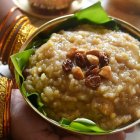 Want to Pamper Your Taste-Buds this Pongal? Here are Mouth-Watering Pongal Recipes You can't Miss in 2019
Want to Pamper Your Taste-Buds this Pongal? Here are Mouth-Watering Pongal Recipes You can't Miss in 2019
-
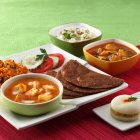 Fasting Does Not Mean Starving! Keep Your Energy Up with These 9 Delicious Navratri Recipes & Fasting Tips for Navratri (2019)
Fasting Does Not Mean Starving! Keep Your Energy Up with These 9 Delicious Navratri Recipes & Fasting Tips for Navratri (2019)
-
 Planning to Fast During Navratri? Here are 9 Quick and Healthy Recipes for Your Navratri Fast in 2019!
Planning to Fast During Navratri? Here are 9 Quick and Healthy Recipes for Your Navratri Fast in 2019!
3 Things to Keep in Mind While Offering Bhog/Naivedya

- Use Satvik Ingredients: The food offered should be purely vegetarian and should not include garlic, mushrooms, or onions. Also, less quantity of oil, chilli, and salt must be used while preparing the dishes for bhog, as all these ingredients are considered to be Raja-Tama predominant. Sattvic food can imbibe positive sattvic waves from God as blessings.
- Don’t Taste Food Before Bhog: The bhog prepared for God is a holy meditation and is prepared with the intention of satisfying God. He should be the one to taste the food first. Also, the atmosphere while preparing food should be conducive to create a devotional state. One should be peaceful and calm during food preparation.
- Cover The Bhog: Bhog has to be covered to control the emission of waves from food into the surroundings. The bhog is prepared using sattvic substances, and in Kaliyug Raja-Tama, nature is predominant. If bhog is not covered, there is a possibility of the food becoming predominant in Raja-Tama. Therefore, it is advised to keep the food covered.
Relevance Of Ashtami Prasad - Puri, Kala Chana & Halwa with their Recipes
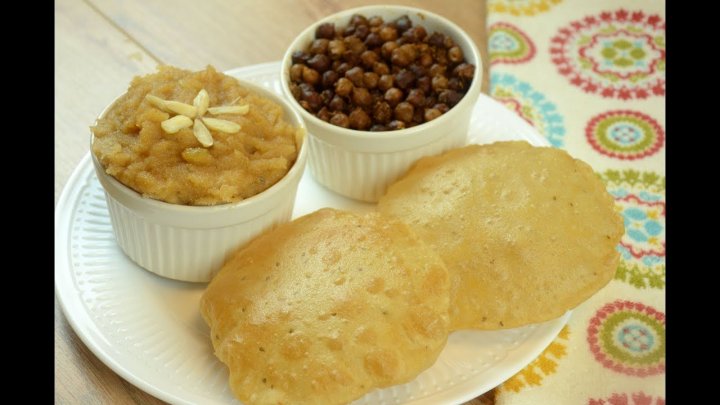
There are a few reasons why halwa, poori, and chole combination is prepared on Ashtami. Firstly, this tasty combination is in and of itself, a complete meal. It is easy to make early in the morning during Kanjak puja. Moreover, it is believed that these items are favourite of Goddess Durga, and feeding kanjaks means you are offering Goddess her favourite food.
Halwa Recipe
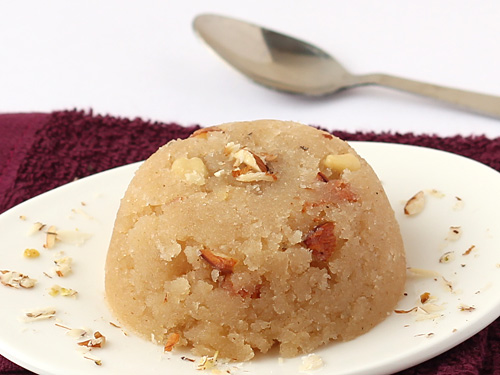
Sooji halwa is a quick recipe to make and is prepared to offer as naivedyam or bhog to the deities. If you want to prepare this halwa in a large quantity, then follow the ratio of 1 : 2/3 : 2/3 : 1.25 cups of sooji, sugar, ghee, and water to get the right consistency.
Ingredients
- Sooji – 1 cup
- Sugar – ¾ cup (if you prefer less sweetness then 2/3 cup is adequate)
- Ghee – ½ cup
- Water – 2 cups (this depends on the quality of sooji)
- Dry fruits (cashews, raisins, almonds, chironji, etc.)
- Cardamom powder – ½ tsp
Prepration
- Heat ghee in a thick bottomed pan. When ghee is hot, add sooji along with cashews. Roast the mixture on a low to medium flame until it is slightly golden. This takes about 7 – 8 minutes. Roasting sooji is an important step to get perfect texture.
- Once sooji is fried add raisins and chironji (you can add your choice of dry fruits). Now add cardamom powder.
- When the roasting process is on, you can also start making sugar syrup. Take a heavy saucepan and add sugar to it. Pour water and cook this mixture on medium flame, stirring it occasionally. Bring this solution to a boil.
- Add this hot syrup to the already prepared sooji mixture and stir it continuously to avoid lumps. Keep stirring until the mixture thickens and the sugar syrup is absorbed. Once done, the mixture will leave the sides of the saucepan. Switch off the flame, and the bhog is ready for Ashtami pooja.
Bonus Tips
- Fine variety of sooji must be used for this recipe.
- Make sure both fried sooji and sugar solution are hot.
- Roast sooji and make sugar solution side by side to save time.
- Sugar can be replaced with jaggery and milk instead of water to give a rich flavour and taste to halwa.
Poori Recipe
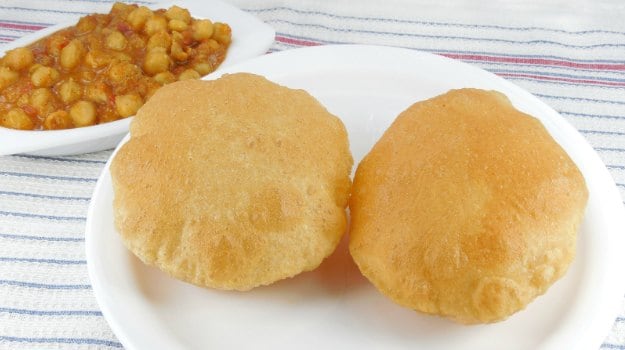
Ingredients
- Wheat flour – 2 cups
- Salt – ½ tsp
Prepration
- Mix wheat flour and salt in a bowl. You can also add a tsp of oil to it. Knead a stiff dough and keep it aside for about 20 minutes.
- Heat oil in a pan. Divide the kneaded dough into lemon sized balls. Flatten each ball and roll it into 3 to 5-inch circles. Make sure the pooris are even throughout. Do not roll the puris too thin. Fry this in hot oil until golden brown.
Kala Chana Recipe
Ingredients
- 1 Cup Channa
- Coriander leaves – 1 to 2 tbsp
- 2 or 3 Green Chilli
- Cumin Seeds – ½ tsp
- 1 inch Ginger Julienne
- Oil – 1 to 2 tbsp
- Garam masala – ¼ tsp
- Red chilli powder – ¼ tsp
- Mango powder – ¼ tsp
- Coriander Powder – 1 tsp
- Turmeric Powder – ¼ tsp
Prepration
- Soak black channa for about 7 hours and pressure cook until it is soft.
- Heat oil in a pan. Add cumin seeds and sauté on low flame. Add slit green chilli and all the spices. Fry until the raw smell disappears. Make sure not to burn the masala.
- Drain water from channa and add this to the above mixture along with salt. Mix well so that masala evenly coats channa and fry for about 2 – 3 minutes. Garnish with coriander leaves.
6 Mouth-Watering South Indian Ashtami Recipes
Coconut Rice
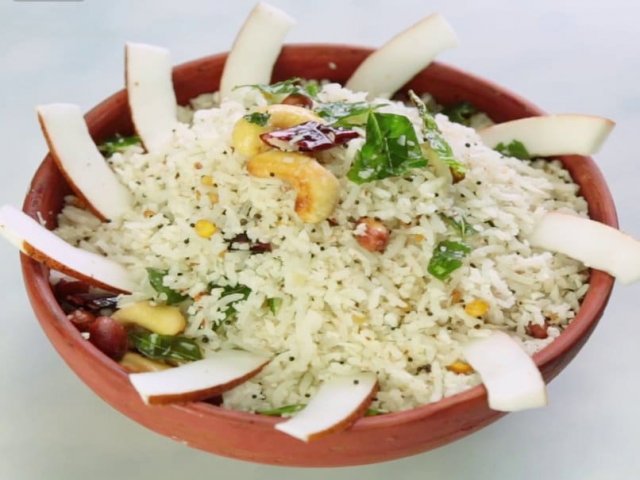
This is a mild and tasty South Indian recipe that is often offered as naivedhyam. The main ingredient of the recipe is freshly grated coconut.
Ingredients
- 4 cups of Cooked White Rice (You can use regular or basmati rice for this recipe.)
- For Tempering: 1.5 tbsp of Oil
- 1.5 cups of freshly grated coconut
- 2 chopped green chilli
- 10 – 12 chopped cashews
- 10 curry leaves
- ½ tbsp Bengal gram
- ½ tbsp spilt Black Gram
- 1 tsp mustard
- 2 Dry Red Chilies
- Salt
Prepration
- Heat oil in a vessel and add mustard seeds. When mustard crackles, add black gram and Bengal gram dal. Sauté for ½ a minute and add cashews. Continue stirring the dal and cashews until it turns golden brown.
- Next add curry leaves, green chillies, and red chillies. Once chilies change colour, add shredded coconut and stir for 2 to 3 minutes until it turns light brown and aromatic.
- Add cooked rice. Mix thoroughly until all the ingredients are blended well. You can top the rice with a tsp of ghee and garnish with coriander leaves.
Coconut Barfi
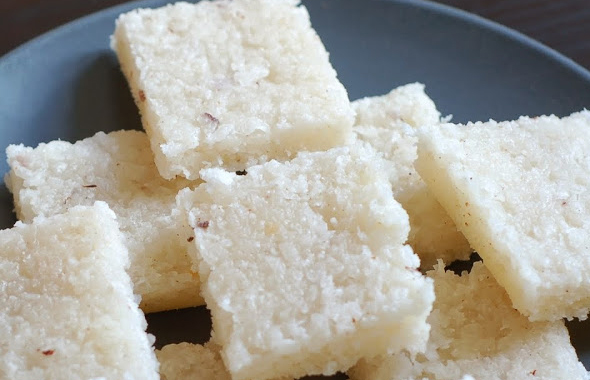
Coconut Barfi is one of the delectable and easy recipes that is prepared during the Navratri festival. Made with grated coconut and sugar syrup, this traditional dessert is relished by everyone, especially on vrat (fast) days.
Ingredients
- 700 g sugar
- 500 g coconut
- 2 tbsp milk
- 20 cashews
- 1 1/2 cups of water
Prepration
- Grate coconut pieces and keep them aside.
- Heat water in a thick bottomed pan and add sugar to it. Bring this to a boil for about 2 to 3 minutes. When it reaches boiling point, add milk to it. Milk makes the syrup transparent and clear. Remove the foamy layer that appears on the top of syrup while boiling.
- The sugar syrup must be thick and sticky. Check the consistency between your forefinger and thumb. Now add grated coconut into the syrup and mix well.
- Take a flat plate and grease it with ghee. Spread the coconut mixture on it evenly. Sprinkle nuts on it. Cut it into a diamond shape and allow it to set.
Puliogare
Ingredients
- Raw Rice – 1/3 cup
- Peanuts – a handful
- Cashews – 4 to 5 pieces
- Red Chilis – 2
- Mustard Seeds – ½ tsp
- Bengal Gram Dhal – 2 to 3 tbsp
- Curry leaves
- Tamarind Paste – 1 tbsp
- Powdered jaggery – 1 tsp
- Salt to taste
- Oil – 3 tsp
Prepration
- Cook rice in pressure cook and allow it to cool.
- Heat oil in a pan. Add mustard, peanuts, and Bengal gram dhal. Sauté for a minute until dal turns brown. Now add curry leaves and cashews. Fry for another minute.
- Add tamarind paste, salt and jaggery powder. Cook for 4 minutes.
- Add rice to this mixture and mix well.
Payasam
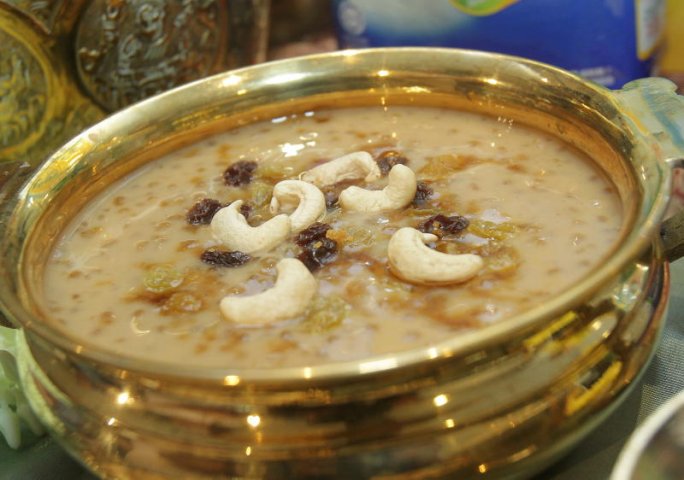
During Ashtami, devotees consume only specific kinds of foods, and Payasam is one of the prominent desserts that is offered to deities during Navaratri. Payasam is the word used for Kheer in South India. There are a variety of payasam recipes, but during Navaratri, gluten-free grains are used to make this dessert.
Ingredients
- ½ Cup Tapioca Pearls (Sago)
- 3 Cups Milk
- 1 Cup Jaggery
- 10 Cashews
- 10 Raisins
- ¼ tsp Cardamom Powder
- 1 ½ Cups Water
- 1 tbsp Ghee
Prepration
- Wash Sago and soak it for at least an hour. Cook with 2 cups of water until it turns transparent.
- Add milk and simmer until the mixture thickens a bit. Remove from flame and add grated jaggery and cardamom powder. Mix until it blends well.
- Alternately, prepare jaggery syrup and cool it. Add this mixture to the prepared sago mixture. Adding hot syrup can curdle the mixture, so one of the mixtures should be cooled completely.
- Take a small pan. Heat ghee and add raisins and cashews. Fry until it turns golden brown. Add this to payasam.
Sundal
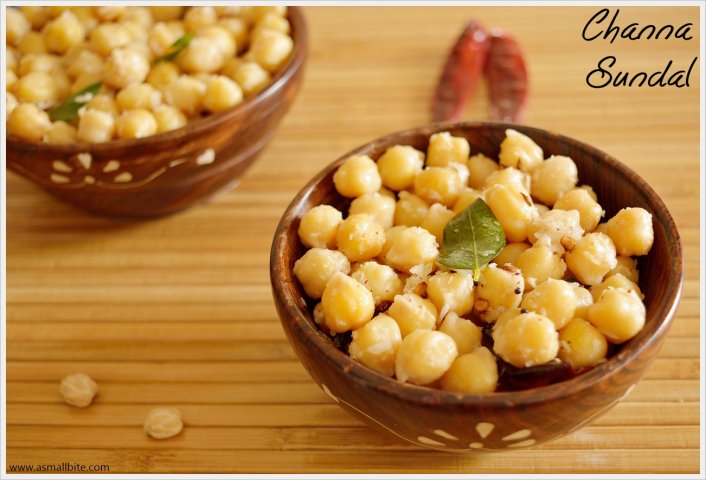
Sundal is a simple recipe to prepare during Navaratri. The traditional varieties include Green Gram Dhal, Field Beans, CowPeas, Bengal Gram, and Chickpeas.
Ingredients
- 1 Cup Soaked Chickpeas
- ¼ cup Grated Coconut
- ½ tsp Urad Dhal
- ¼ tsp Mustard
- 2 Broken Red Chillies
- 10 Curry Leaves
- 1 tsp Green Chilli
- 1 tbsp Oil
- A pinch of asafoetida
- Salt to taste
Prepration
- Rinse soaked chickpeas and pressure cook until soft. Drain out excess water.
- Take a heavy pan and add oil. Once oil is hot add mustard and urad dal. Sauté until dal turns brown. Add green chilli, red chilli, curry leaves, asafoetida.
- Add cooked chickpeas to this tempering along with grated coconut and salt. Mix thoroughly and sundal is ready to be served as naivedhyam.
Medhu Vadai
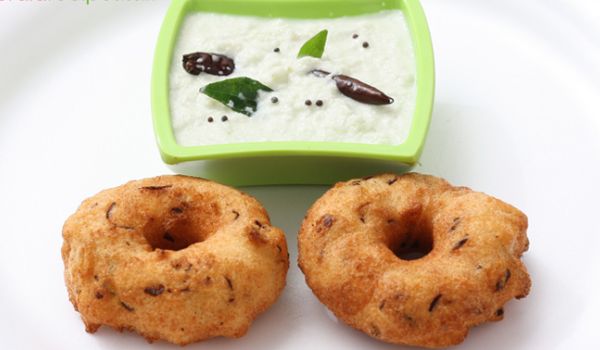
The fluffy and light urad dal vadas are crisp from outside and soft inside. It is flavourful and perfect to offer Goddess Durga on Ashtami day.
Ingredients
- Urad dal – 1 Cup
- Cumin Seeds – ½ tsp (lightly crushed)
- Pepper Corns – 10 (lightly crushed)
- Salt to taste
- Oil for frying
Prepration
- Soak Urad dal for at least 2 hours. Strain and grind it to a smooth paste. Avoid adding too much water while grinding as the paste has to be thick to made vadas.
- Add salt, cumin and pepper corns to the ground paste and mix well.
- Heat oil in a thick bottomed pan until hot and then reduce to medium flame. Wet your hands. Take a small portion of the batter and place it on banana leaf or greased sheet. Flatten slightly and make a hole at the centre.
- Drop each vada in the oil and fry on medium flame until it turns golden brown on both sides.
- You can fry 4 to 5 vadas at a time depending on the size of your pan.
Related Tip: Colours For Navaratri
Navaratri is celebrated with great fervour and devotion in India. Besides worshipping Maa Durga, fasting, playing dandiya, and preparing special Navaratri foods, people wear specific colours on nine days of the festival.
- Day 1 – Orange: Goddess Shailputri is worshipped on this day and Orange colour represents happiness and energy.
- Day 2 – White: Goddess Brahmacharini is worshipped on this day. The colour represents purity and peace.
- Day 3 – Red: Goddess Chandraghanta is worshipped on this day. Red symbolises fearlessness and beauty.
- Day 4 – Royal Blue: Goddess Kushmanda is worshipped on this day. Royal Blue represents wealth and good health.
- Day 5 – Yellow: Goddess Skandamata is worshipped on this day. Yellow represents brightness and happiness.
- Day 6 – Green: Goddess Katyayani is worshipped on this day. Green represents new beginnings.
- Day 7 – Grey: Goddess Kalaratri is worshipped on this day. The Grey colour stands for transformation and strength.
- Day 8 – Purple: The 8th day is also known as Ashtami and kanjak puja is performed on this day. Goodness Mahagauri is worshipped on this day. Purple symbolises peace and intellect.
- Day 9 – Peacock Green: Goddess Siddhidhatri is worshipped on this day. The green colour is considered to fulfil desires.
-
 Want to Pamper Your Taste-Buds this Pongal? Here are Mouth-Watering Pongal Recipes You can't Miss in 2019
Want to Pamper Your Taste-Buds this Pongal? Here are Mouth-Watering Pongal Recipes You can't Miss in 2019
-
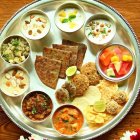 क्या आप नवरात्रि के लिए उपवास कर रहे हैं? यहां आपके लिए 9 नवरात्रि व्यंजन बनाने की विधि है जो आपके लिए शुद्ध, स्वादिष्ट और स्वस्थ की गारंटी है (2020)
क्या आप नवरात्रि के लिए उपवास कर रहे हैं? यहां आपके लिए 9 नवरात्रि व्यंजन बनाने की विधि है जो आपके लिए शुद्ध, स्वादिष्ट और स्वस्थ की गारंटी है (2020)
-
 This Festive Season Try Your Hand at Homemade Sweets! Here are Hand Picked Indian Sweet Recipes for Celebrations in 2019
This Festive Season Try Your Hand at Homemade Sweets! Here are Hand Picked Indian Sweet Recipes for Celebrations in 2019
-
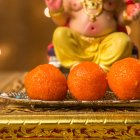 7 Simple and Easy Prasad Recipes That Anyone Can Make. Give New Meaning to Your Devotion Through Prasad Made with Love (2020)
7 Simple and Easy Prasad Recipes That Anyone Can Make. Give New Meaning to Your Devotion Through Prasad Made with Love (2020)
-
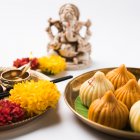 Looking for Delicious Ways to Celebrate Ganesh Chaturthi? Treat Your Family to 10 Yummy Ganesh Chaturthi Recipes (2019)
Looking for Delicious Ways to Celebrate Ganesh Chaturthi? Treat Your Family to 10 Yummy Ganesh Chaturthi Recipes (2019)
Prasad is Not Just Nutrition Food, but is Considered as Sacred as the Goddess Herself!
Navaratri is one of the most awaited festivals in India, which is dedicated to Maa Durga. The celebration lasts for nine days, and during this period, people fast for worshipping Goddess Durga. Some fast for all nine days while others only on Saptami, Ashtami and Navami days. The entire process of preparing prasad is a powerful meditation. The intense devotion in the God subtly transcends to the food offered to the deity, so it is not just material nutrition, but it becomes a spiritual and sacred prasad.

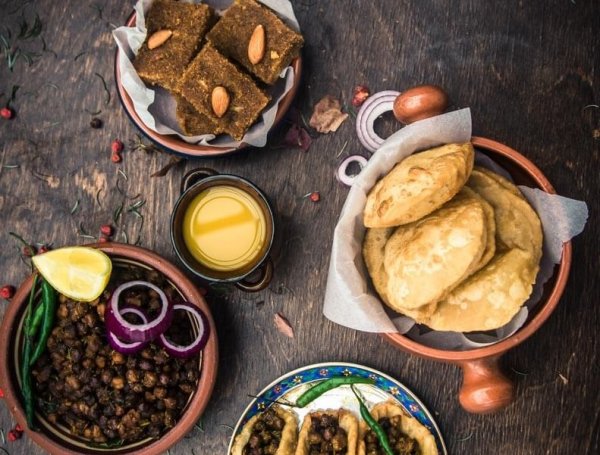
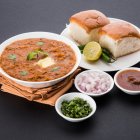


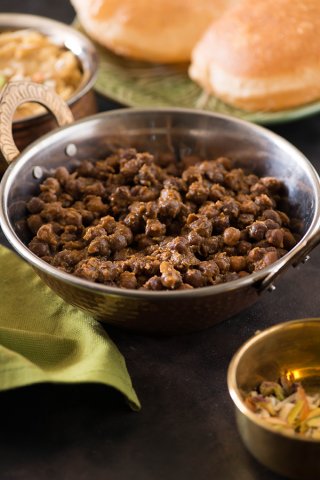

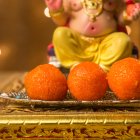
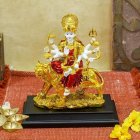


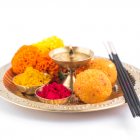


 Highlight the Best Facets of Your Incomparable Beauty: Discover the Best Face Highlighter Currently Available in India and Everything You Need to Know About Using Face Highlighters for Maximum Effect (2023)
Highlight the Best Facets of Your Incomparable Beauty: Discover the Best Face Highlighter Currently Available in India and Everything You Need to Know About Using Face Highlighters for Maximum Effect (2023)
 Forget the Blemishes and Get that Picture Perfect Flawless Radiance on Your Face: Check out the Best Foundations for Oily Skin Currently Available in India and Everything You Need to Know About Makeup Foundations (2023)
Forget the Blemishes and Get that Picture Perfect Flawless Radiance on Your Face: Check out the Best Foundations for Oily Skin Currently Available in India and Everything You Need to Know About Makeup Foundations (2023)
 Make Your Presence Felt Wherever You Go: Discover the Best Perfumes Under 2000 for Both Men and Women to Announce Your Arrival and Make Any Occasion Memorable (2023)
Make Your Presence Felt Wherever You Go: Discover the Best Perfumes Under 2000 for Both Men and Women to Announce Your Arrival and Make Any Occasion Memorable (2023)
 Protect Your Oily Skin from the Harmful Rays of the Sun: Discover the Best Gel Based Sunscreens for Oily Skin and Everything You Need to Know Before Buying One (2023)
Protect Your Oily Skin from the Harmful Rays of the Sun: Discover the Best Gel Based Sunscreens for Oily Skin and Everything You Need to Know Before Buying One (2023)
 Minor Blemishes and Wrinkles Affecting Your Confidence? Check out the Best BB Creams to Conceal Your Worries and Nourish Your Skin to Restore the Healthy, Radiant and Glowing Complexion Back Again (2023)
Minor Blemishes and Wrinkles Affecting Your Confidence? Check out the Best BB Creams to Conceal Your Worries and Nourish Your Skin to Restore the Healthy, Radiant and Glowing Complexion Back Again (2023)
